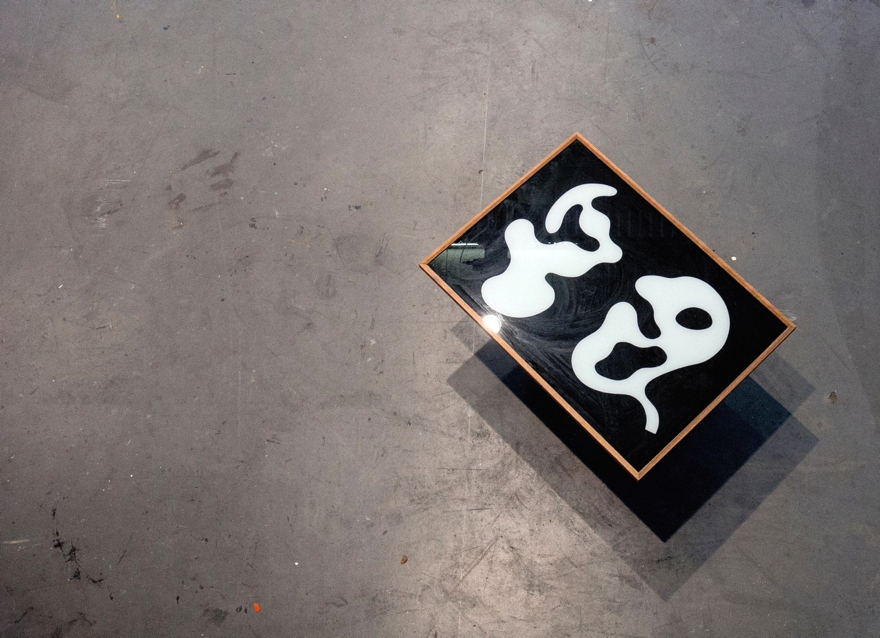|
FOR THE LOVE OF ATTENTION

Text written for the publication ‘Rotate Rietveld’, by David Groot, with the installation in the Gerrit Rietveld Academie of his 1987 work Temet in mind.
Book printed in an edition of 80, May 2015
Every artwork which invites our attention must be the unique embodiment of the equally exquisite as that it is vulnerable attention paid by its maker. Established like a work is, in each single constructive decision, in each however minuscule manipulation at the tip of a tool, defining colour and shape, in each careful observation of its development, each consideration adjusting intention and operation, at any stage of its realization: conception, fabrication, finishing, presentation, documentation — of which the work is a never ending series... yes, even of multiple finishings! — within the context of such minute making, every ‘making of’ story of an artwork is as much a fancy as is the actual piece which it talks about. In fact they are two occurrences of the same narrative, the construction of attention falling together with material being moulded into shape.
The only possible ‘making of’ documentation of an artwork would consist of the precise recording of the artist's attention — yet taken down in which medium, we should ask, narrated by whom, in which voice, illustrated with which images, other than the medium, voice, and images that are already present in the work proper? A work is the only possible recording of its own coming into being. It is the only object testifying the artist’s attentive perception, and reflection on what he perceives, and action upon that reflection, inducing ever new observations of the coming into existence of a piece which previously was not. Attention accumulates for ever, in every work of art.
What holds for a single piece holds equally for a series of works, for a body of work, for an exhibition, for an event. The more we pay attention, the more attention is generated. This also applies to spaces where its concentration is high, like the artist studio, a collector’s house’s wall, an art venue, a theater, a movie house. Temporary increased concentration appears at specific events, like vernissages or studio visits. Attention concentration happens in social interaction around the arts. Sharing it is a special joy and inductive to its quality. For an artist inhabiting his attention however is not a question of control over the work. Attention for the work does not promote mind over matter, it is mind in matter, in observation and memory, speculation and gesture, skill and chance, mark and erasure, steps taken blending, mixing, framing, opening, displaying, closing. And infinitely more operations like that — working matter, contemporary to its eye-witness.
Standing side by side with the artist at work, overseeing the creative process, however fascinating an experience that is, would not disclose all the subtle details about the quality and quantity of attention being paid here. They can not be found out in the real time of fabrication of the work. Rather, once we are confronted with a piece on display we can start to ask ourselves some questions, never to hope for a right answer but for some illumination. What are we looking at, to what has been paid so much attention here, what are we ourselves actually paying attention to? While its accumulation, as I described before, can occur under social conditions, the singular attention of the artist and the attention of an individual spectator are different experiences altogether from the collective experiences at the more crowded occasions. Both work well together but they inform us with a different partial understanding of a work’s attention abundance. That quality is only achieved when we are face to face with the work.
To pay abundant attention and cherish it for its own sake is a labour of love. Attention drawn into and processed in an artwork stands out from attention invested in other causes or investigations. The artwork is essential and unique in its attention impregnation property. Never fully saturated it keeps producing and storing awareness, opening up new narratives. From this experience we never return empty-handed, even if we may remain in the dark for those peripheral to our consciousness issues which every successful work evokes. Attention for the sake of attention is a principle agency in the aesthetic and cognitive challenges each of us keeps confronting.
Then again.
|
|
